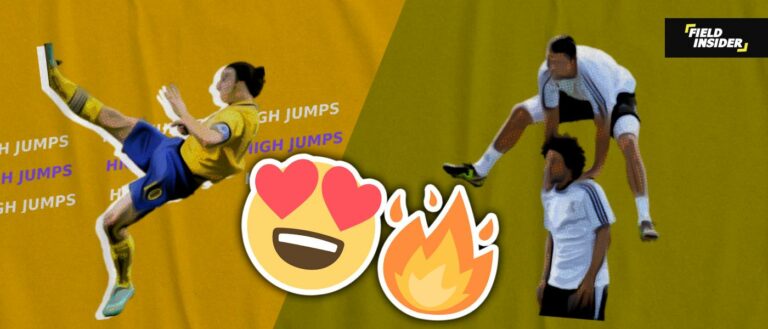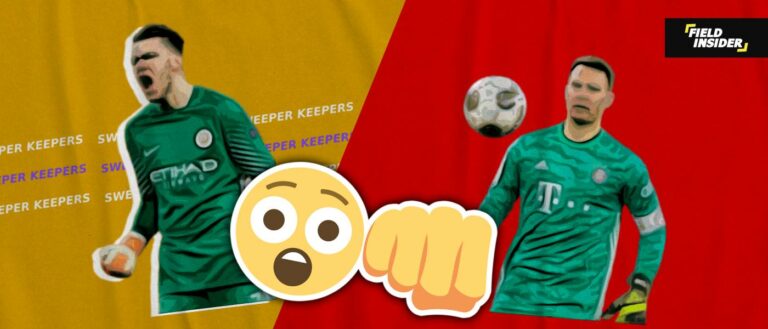Why Are Some Footballers Injury Prone?
Football is a sport that combines skill, strategy, and athleticism. However, it’s also a field where injuries are a common setback. Some players seem to be more injury prone than others, and understanding why can be crucial for their careers and teams.
This article delves into the various factors that make a footballer injury-prone, offering insights into prevention and management strategies.
key takeaways
| Topic | Key Takeaways |
|---|---|
| Understanding Injury-Prone Players | Injury-proneness in football is influenced by a complex interplay of physiology, playing style, and psychological factors, impacting both individual players and team dynamics. |
| Factors Contributing to Injury-Prone Footballers | Factors include player physiology (like genetics and muscle imbalances), playing style (aggressive vs. cautious), training and conditioning, external factors (such as playing surface), and psychological influences. |
| Case Studies and Examples | Real-life examples of players like Neymar, Hazard, and Bale illustrate how various factors converge to influence injury-proneness. |
| Injury Prevention and Management | Effective injury prevention and management involve strength and conditioning programs, proper warm-ups and cool-downs, medical oversight, and psychological support. |
| Psychological Aspect | Stress, anxiety, and mental fatigue significantly impact a player’s injury risk, highlighting the need for mental resilience training and psychological support in football. |
Understanding Injury-Prone Players
Defining “Injury-Prone” in Football
Being labeled as “injury-prone” in football isn’t just about frequent injuries; it’s a term that encompasses a player’s susceptibility to getting injured more often than their peers.
This could be due to a variety of reasons, including but not limited to physiological factors, playing style, and even psychological aspects. Understanding this concept is crucial, especially when considering the impacts of different football formations on player roles and injury risks.
Significance in Professional Football
Addressing injury proneness is significant in professional football due to its impact on a player’s career longevity and a team’s performance. Players who are often injured can miss crucial games, affecting team dynamics and success.
Moreover, frequent injuries can shorten a player’s career, leading to early retirement. Insights into managing and reducing injuries, as discussed in preventing injuries in young players, are vital for both individual players and teams.
Impact on Teams and Tactics
Injury-prone players also pose a tactical challenge for teams. Coaches must frequently adjust strategies and line-ups to compensate for the absence of key players.
This unpredictability can disrupt team chemistry and hinder long-term tactical planning. For a deeper understanding of how injuries can impact team tactics, our analysis of team analysis provides further insights.
Factors Contributing to Injury- Prone Footballers

Player Physiology
Understanding a player’s physiology is fundamental in assessing injury risks. Genetics and individual physical characteristics play a significant role. For instance, players with a naturally higher muscle mass may be more prone to muscle-related injuries.
Conversely, those with less dense bone structures might be at a higher risk for fractures. Delving into the specifics of a player’s physique, as discussed in footballer’s body types, is crucial for tailored injury prevention strategies.
Playing Style
A player’s approach to the game significantly impacts their injury risk. Aggressive players, known for their intense physical play, are often more susceptible to acute injuries.
On the other hand, players with a more cautious style might experience overuse injuries. Understanding these styles, as highlighted in our coverage of different football formations, is key to predicting and preventing potential injuries.
Training and Conditioning
The nature and intensity of training are critical in influencing a footballer’s injury vulnerability. Rigorous training without adequate recovery can lead to overuse injuries, while inadequate training may leave players underprepared for the physical demands of the game.
Incorporating insights from effective football training programs can help in striking the right balance.
External Factors
External factors, such as the quality of playing surfaces and environmental conditions, play a significant role in injury risks. Poor field conditions can lead to accidents, while extreme weather conditions can exacerbate the risk of certain injuries.
Players and coaches must be aware of these factors, as detailed in our guide on preparing for different playing conditions.
Psychological Influences
The mental and emotional well-being of players is increasingly recognized as a crucial factor in injury proneness. High levels of stress or anxiety can not only affect a player’s performance but also increase their susceptibility to injuries.
Emphasizing mental health, as explored in psychological impact in football, is essential for a holistic approach to injury prevention.
Most Common Injuries & How They Occur
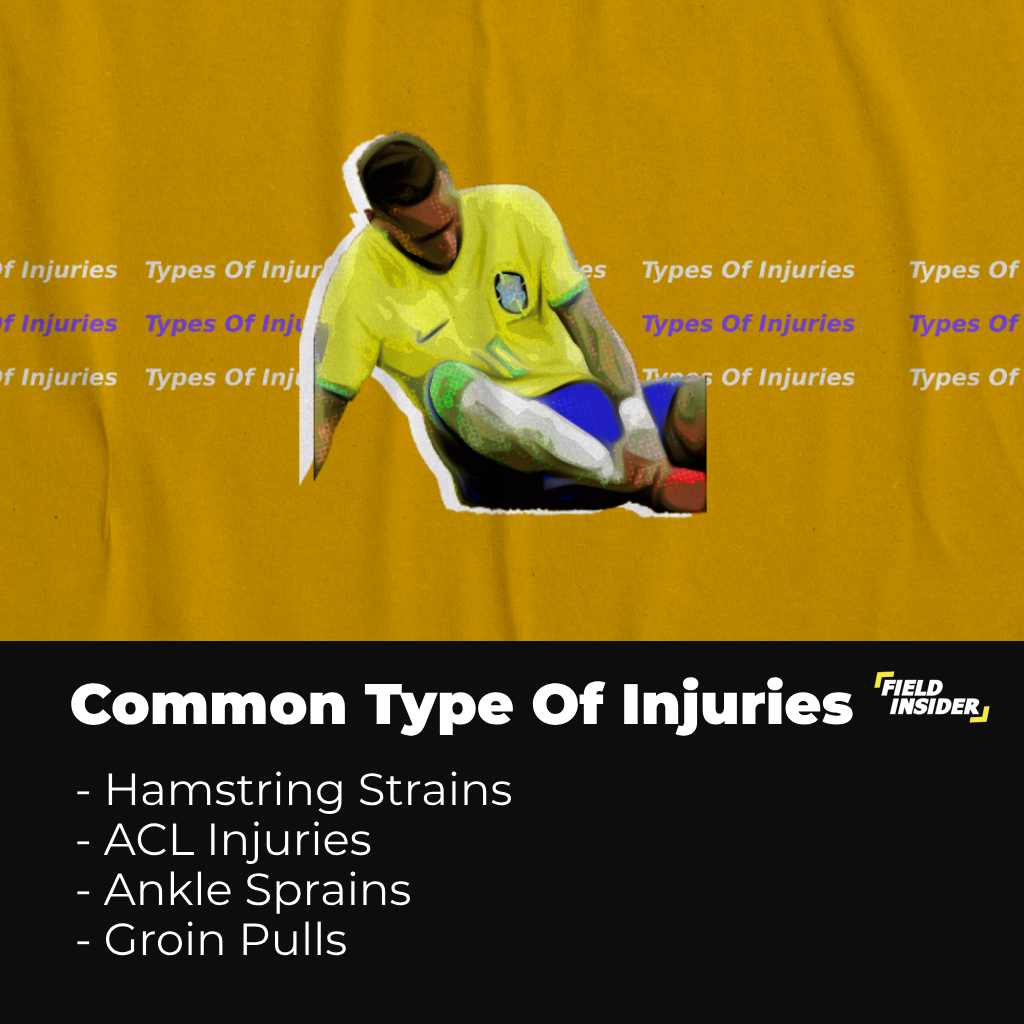
Hamstring Strains
Hamstring strains are one of the most common injuries in football, often occurring during high-speed running or sudden movements. These injuries typically happen when the muscle is overstretched or subjected to too much force.
Adequate warm-up routines and specific strengthening exercises are crucial in preventing hamstring injuries. For more on training to prevent such injuries, check out our article on football training exercises at home.
Anterior Cruciate Ligament (ACL) Injuries
ACL injuries are prevalent in football, frequently resulting from sudden stops or changes in direction. This type of injury can be career-altering and often requires extensive rehabilitation.
Understanding the mechanics of movements in football, as discussed in our guide on football agility, can help players avoid movements that put undue strain on the ACL.
Ankle Sprains
Ankle sprains occur when the foot twists or rolls, stretching or tearing the ligaments in the ankle. This injury is common in football due to the sport’s dynamic footwork and contact nature.
Wearing proper footwear and practicing balance exercises are key preventive measures. Insights into choosing the right gear can be found in our overview of Nike Mercurial Vapor boots.
Groin Pulls
Groin pulls are injuries to the muscles of the inner thigh, common in football due to the sport’s emphasis on sudden changes of direction and lateral movements.
Preventing groin pulls involves strengthening the inner thigh muscles and ensuring adequate flexibility. Our article on strength training for footballers provides relevant information on conditioning these specific muscle groups.
Concussions
Concussions, though less common than other injuries, are a serious concern in football. They usually occur from collisions or falls that cause a jarring impact to the head.
Recognizing concussion symptoms and ensuring proper recovery time is critical, as highlighted in our piece on health and safety in football.
Analyzing Injury Trends in Football Matches
The data presented in the bar chart below reveals a compelling trend in the occurrence of injuries during football matches. As we observe the intervals, a clear pattern emerges, showing an ascending frequency of injuries as the game progresses.
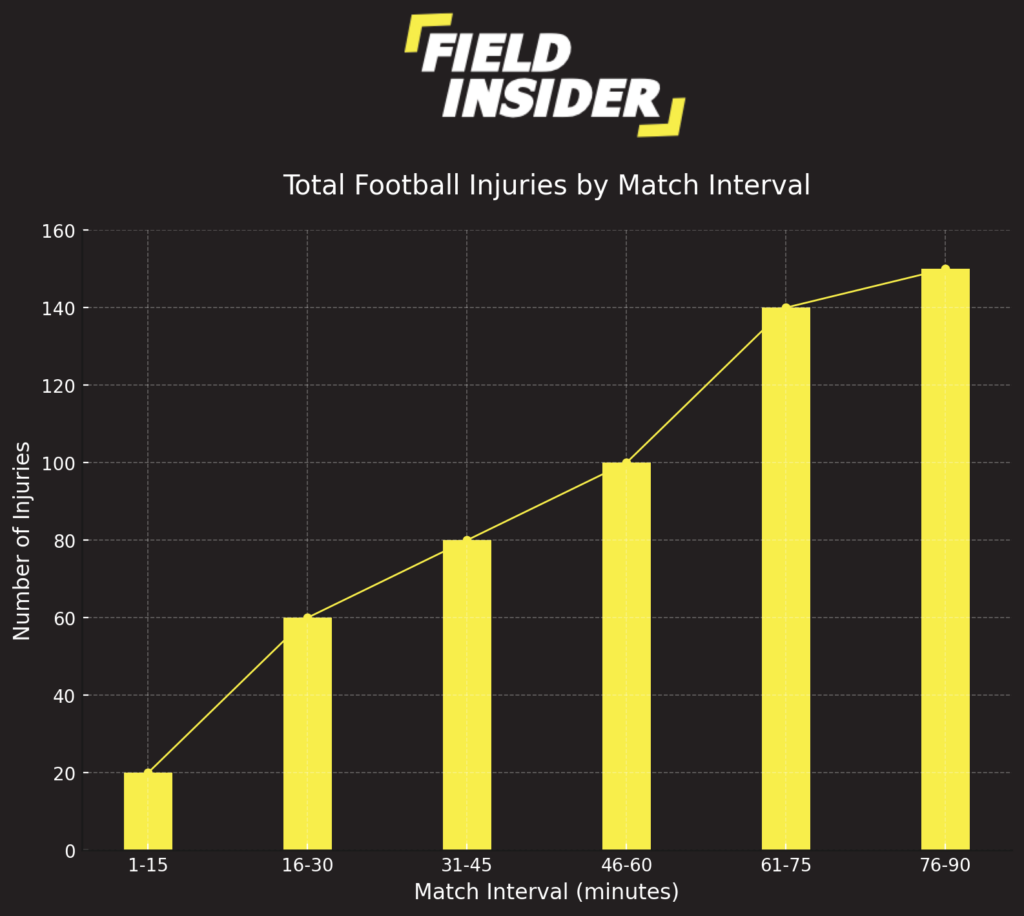
In the opening 15 minutes, the number of injuries is relatively low, with approximately 20 occurrences. This could be attributed to the players being at their peak physical condition after a pre-game warm-up.
As the match continues, fatigue begins to set in, evidenced by a substantial increase to around 60 injuries between the 16th and 30th minutes.
Approaching halftime, between the 31st and 45th minutes, the trend continues upward, reaching approximately 80 injuries. This rise can often be associated with the sustained intensity of the first half and players pushing their limits before the break.
In the second half, the data illustrates a more pronounced spike. The 46th to 60th-minute interval shows around 100 injuries, suggesting that as players return from halftime, the rest period may not be sufficient to fully recover from first-half exertions.
Between the 61st and 75th minutes, injuries soar to around 140, and in the concluding 15 minutes, they peak at approximately 150. This substantial increase is indicative of the cumulative effect of fatigue, decreased concentration, and the often-desperate nature of endgame play.
The information provided by this chart is invaluable for coaches, medical teams, and players themselves. It emphasizes the critical need for effective fitness programs, strategic rest periods.
Case Studies and Examples
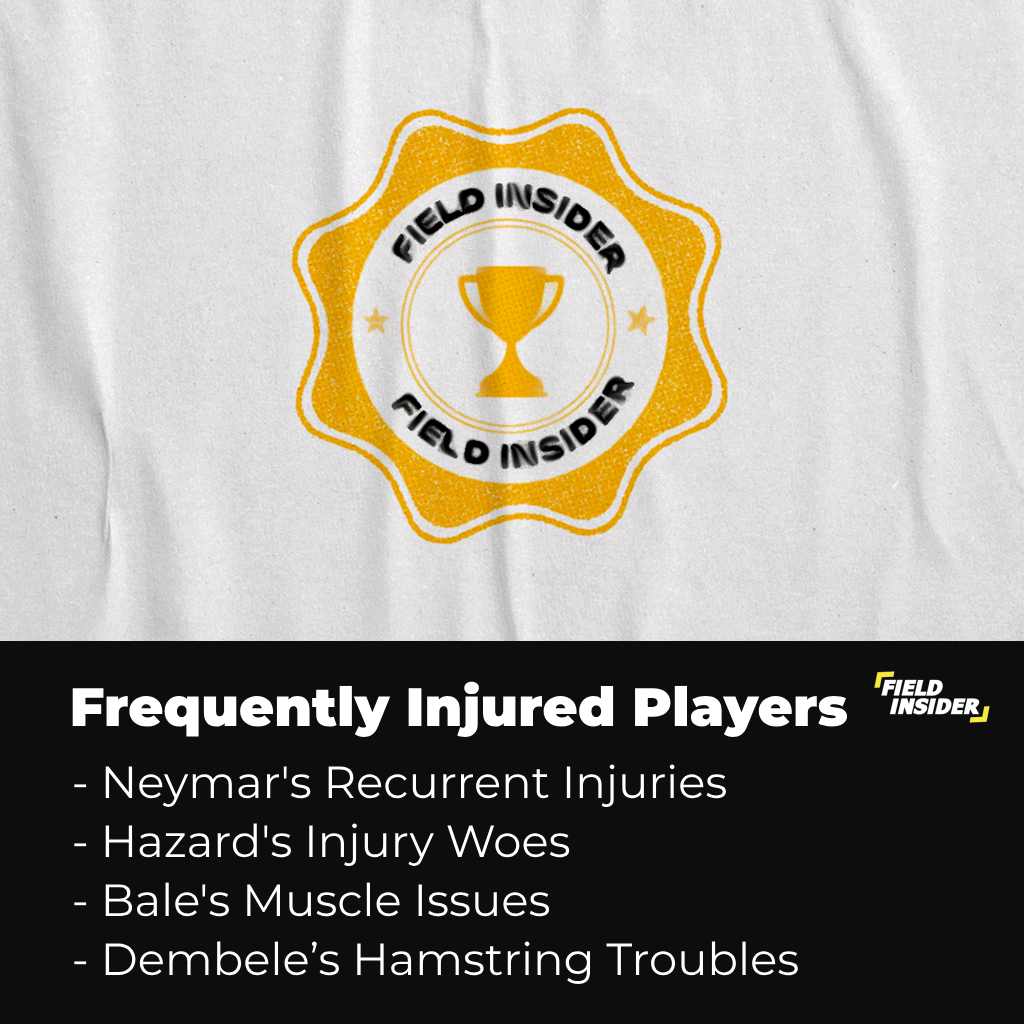
Neymar’s Injury Struggles
Brazilian superstar Neymar has often been in the spotlight not just for his exceptional skills but also for his recurring injuries. His playing style, which combines high speed with intricate dribbling, often draws aggressive responses from opponents, leading to injuries.
This pattern, evident in his numerous layoffs during critical phases of the season, highlights the impact of playing style on injury susceptibility. For more on managing such risks, our guide on attacking football positions offers valuable insights.
Eden Hazard’s Injury Woes at Real Madrid
Eden Hazard is one of the most injury prone footballer of this generation. Eden Hazard’s transfer to Real Madrid was met with high expectations, but his tenure there has been marred by repeated injuries. Hazard’s case illustrates how a combination of factors, such as adapting to a new league’s physicality and training intensity, can exacerbate injury proneness.
This situation underscores the need for tailored training and adaptation strategies, as discussed in football training.
The Recurring Injuries of Gareth Bale
Gareth Bale’s career, particularly during his time at Real Madrid, has been hindered by recurrent injuries. Despite being an exceptional talent, his frequent muscle injuries and setbacks have been a significant concern.
Bale’s situation reflects the importance of proper muscle conditioning and injury prevention measures, which are further elaborated in our article on physical training in football.
Ousmane Dembele’s Hamstring Troubles
Ousmane Dembele, known for his explosive pace and agility, has had a challenging time with hamstring injuries at Barcelona.
His case is a classic example of how high-intensity play, coupled with inadequate recovery or pre-existing conditions, can lead a player to be an injury prone. Understanding the importance of recovery and conditioning is crucial, as highlighted in preventing injuries for young players.
Injury Prevention and Management
Strength and Conditioning Programs
Effective strength and conditioning programs are essential in injury prevention for footballers. These programs are designed to enhance overall fitness, focusing on core strength, flexibility, and stability, which are vital in reducing the risk of injury.
Tailored exercises that align with a player’s specific needs and playing position can significantly lower the chances of both acute and overuse injuries. For more detailed insights, our article on physical training in football offers comprehensive strategies.
Importance of Warm-ups and Cool-downs
Proper warm-up and cool-down routines play a crucial role in preparing the body for the physical demands of football and in recovery post-exercise, respectively.
Warm-ups increase blood flow and prepare muscles for high-intensity activities, thereby reducing the risk of strains and sprains. Cool-downs help in gradually lowering the heart rate and preventing muscle stiffness, crucial for injury prevention.
Role of Medical Staff and Sports Science
The involvement of medical staff and the application of sports science are vital in managing and preventing injuries in football. Advances in sports science, like biomechanics analysis and data-driven training programs, play a significant role in customized injury prevention strategies.
Regular health assessments, injury screenings, and rehabilitation programs overseen by medical professionals help in early detection and treatment of potential issues.
Psychological Support
Addressing the psychological aspects of injury prevention and management is equally important. Mental resilience training, stress management, and adequate rest are crucial for overall well-being, which in turn impacts injury risk.
Mental health professionals can provide support in coping with the pressures of professional football, thereby reducing the likelihood of stress-related injuries. The role of psychology in football is well-articulated in our article on improving children’s mental health through football.
Psychological Aspect
Stress and Anxiety in Football
Stress and anxiety are prevalent in the high-pressure environment of professional football. These psychological factors can directly impact a player’s risk of injury, as mental stress often translates into physical tension.
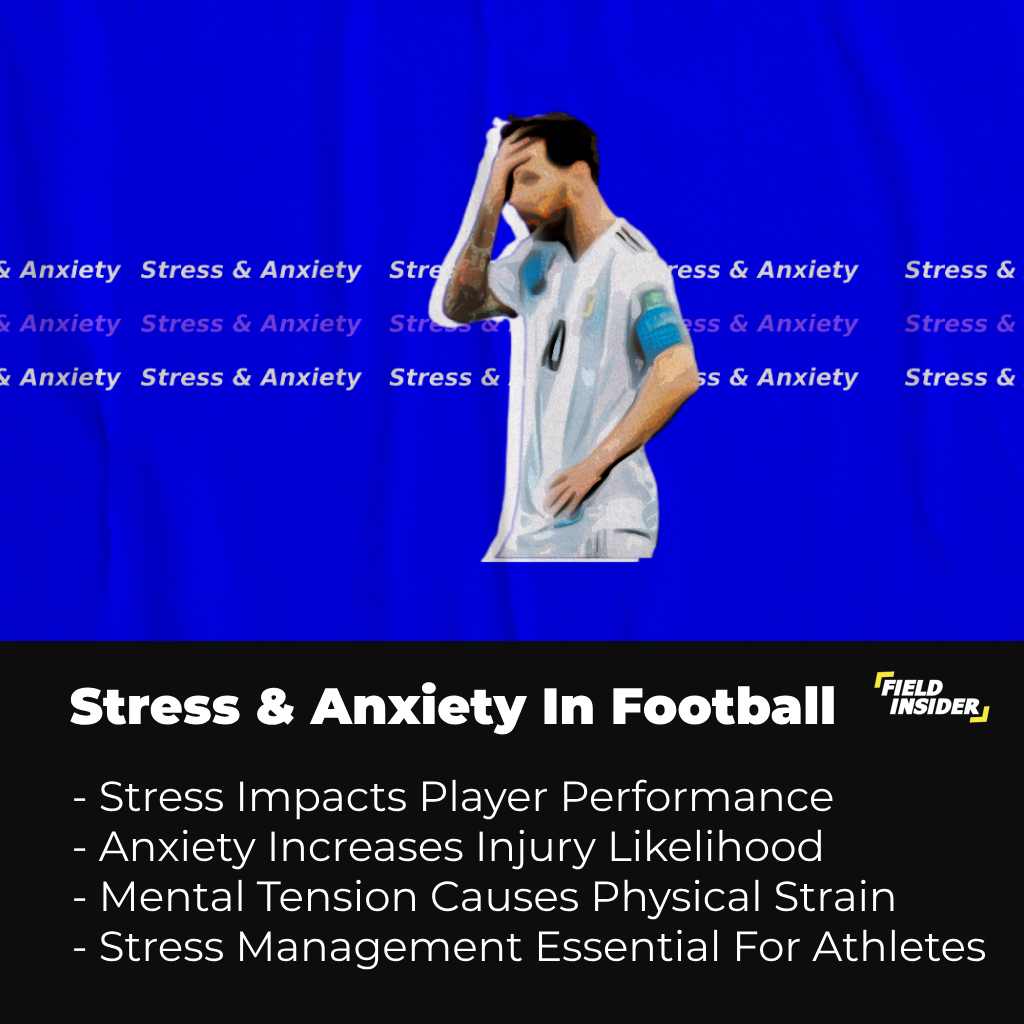
This tension can lead to muscle stiffness or impaired decision-making on the field, increasing the likelihood of injuries. Players, therefore, need strategies to manage stress, as highlighted in our comprehensive guide on football improves children’s mental health.
Mental Fatigue and Injury Risk
Mental fatigue is another significant factor contributing to injury proneness in footballers. It can result from the constant pressure to perform, media scrutiny, or personal issues.
Fatigue impairs concentration and reaction times, crucial in a sport requiring split-second decisions and high coordination. Addressing mental fatigue through proper rest, relaxation techniques, and psychological support is vital for injury prevention.
Role of Sports Psychology
Sports psychology plays a critical role in helping players build mental resilience and cope with the pressures of professional football. Techniques like visualization, mindfulness, and cognitive-behavioral strategies can equip players with tools to handle stress and anxiety effectively.
Conclusion
In conclusion, understanding why some footballers are more prone to injuries involves a multifaceted approach, encompassing physiological, psychological, and environmental factors.
This article has explored these various dimensions, from the intrinsic factors like genetics and muscle imbalances to the external influences of playing style and training regimes.
Case studies of renowned players like Neymar, Hazard, and Bale provide real-world context to these concepts, underscoring their relevance in the professional arena.
As we continue to advance our understanding of sports science and medicine, the goal remains clear: to reduce the incidence of injuries and promote a safer, more sustainable playing environment for athletes at all levels.





